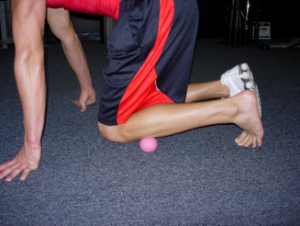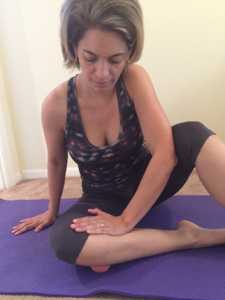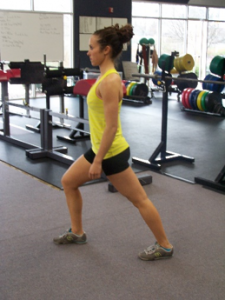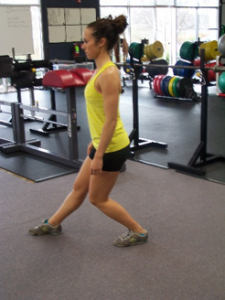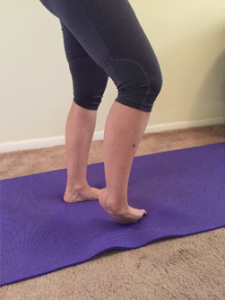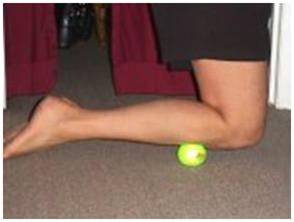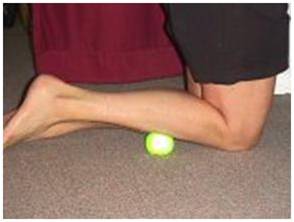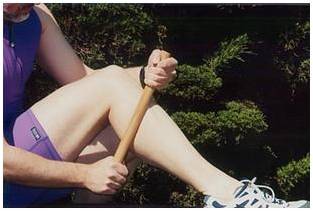Get Rid Of Foot Pain And Enjoy Running Again
 Sometimes I like to start my blog with ideas I think you may find helpful. This year, I’m not only writing goals, I’m doing something that was suggested by Pegine Echevarria. I’m looking back on last year and writing down as many of my successes as I can remember. Goals are the roadmap for the future, but remembering past successes lifts our confidence that we’ll be able to achieve the goals we have set.
Sometimes I like to start my blog with ideas I think you may find helpful. This year, I’m not only writing goals, I’m doing something that was suggested by Pegine Echevarria. I’m looking back on last year and writing down as many of my successes as I can remember. Goals are the roadmap for the future, but remembering past successes lifts our confidence that we’ll be able to achieve the goals we have set.
In fact, this year I’m going to look at each day and write down a success that I’ve had that day. How wonderful it will be on New Year’s Eve to look back and read 365 successes for 2020!
I hope you are enjoying a wonderful start to 2020. Here’s to a year of adventure, joy, health, prosperity, and fulfillment of all your dreams!
Foot Pain And Plantar Fasciitis
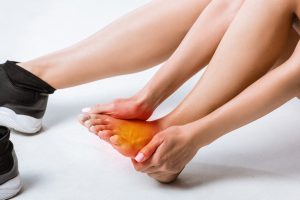 With the new year here, lots of people have decided to get into a routine of walking, or running, to improve their health. I’ve also spoken to so many people about pain in the arch of the foot, a condition called plantar fasciitis. Most people have been told to focus their attention on the foot.
With the new year here, lots of people have decided to get into a routine of walking, or running, to improve their health. I’ve also spoken to so many people about pain in the arch of the foot, a condition called plantar fasciitis. Most people have been told to focus their attention on the foot.
However, the muscles of your lower leg are responsible for the movements of your foot, so ignoring them and focusing on your foot is useless.
That’s like pulling your hair and then putting your focus on the pain in your head…while you’re still pulling your hair. It doesn’t work! You’re looking in the wrong place!
The vast majority of pain in your arch isn’t coming from your foot, it’s coming from your lower leg.
Stick with me, this is going to be so logical that you’ll wonder why you haven’t already heard about treatment and stretches for the real source of plantar fasciitis.
Relief From Plantar Fasciitis Pain
Let’s take a look at the muscles that move your foot. There are many tiny, intrinsic muscles but we’re not talking about them today…we’re talking about the major movers of your foot.
In case you would like to find the muscles in an anatomy book or on the internet, they are:
· Gastrocnemius: A calf muscle that merges into the Achilles tendon.
· Soleus: Under the gastrocnemius, the soleus also merges into the Achilles tendon. These two muscles pull your heel up so you can stand on your toes. When they are tight, they are pulling up on your Achilles tendon and pulling the bone up, even when you want to keep your foot flat on the ground. This causes your arch muscle to be pulled backward, causing arch pain.
· Tibialis Anterior: Primary muscle causing plantar fasciitis because it inserts into your arch. The tibialis anterior muscle is along the outside of your shin bone and inserts into the long bone on the inside of your arch. When it contracts the foot rolls toward the outside of the foot. This muscle also causes shin splints. When it is tight it is pulling hard on the bone and you feel pain in your arch.
· Peroneals: A group of two muscles inserting into the outside of your foot and arch. The peroneals originate along the length of your lower leg bone (Fibula) and insert into the bones on the outside and the inside of your arch. When they are tight, they pull the bones toward the outside of your foot, and you have arch pain.
These four muscles are pulling your arch in three different directions at the same time. This creates arch pain, but the source is in your lower leg!
Before jumping into the stretches for plantar fasciitis, I recommend first doing the self-treatments to release the tension in these muscles.
3 Self-Treatments For Plantar Fasciitis Pain
To treat your tibialis anterior, place a ball just below your knee and on the outside of your shin. Then move your leg so the ball rolls down toward your ankle.
If your arch feels like it’s going to cramp, simply roll your toes as shown in this picture.
To treat your peroneals, place a ball as shown in the picture on the right. Put your hand on your leg so you can press the muscle down into the ball. Then move your leg so the ball rolls down toward your ankle
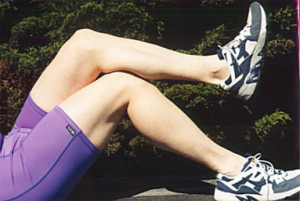 There are several ways to treat your calf but they all use the same principle. Put the center of your calf directly on your opposite kneecap. Press your leg down so your kneecap goes deeply into your calf muscle.
There are several ways to treat your calf but they all use the same principle. Put the center of your calf directly on your opposite kneecap. Press your leg down so your kneecap goes deeply into your calf muscle.
Don’t slide, just rock your leg up and down, along the length of the muscle.
You can also do this treatment while sitting in a chair.
3 Stretches For Plantar Fasciitis Pain
Note: It is most beneficial to release the spasms (muscle knots) in the muscles as shown above before doing the stretches for plantar fasciitis relief. This is the case for any muscle as it “unties the knot” that has shortened the muscle allowing you to stretch without injuring the muscle fibers.
The picture on the left shows a common, runners stretch for the gastrocnemius muscle.
In order to get a proper stretch, it is important to keep your heel on the ground as you tilt your body forward.
Notice that you don’t need to be leaning forward and holding on to anything. Stand up straight.
To stretch the deeper muscle, the soleus, slowly bring your bottom back while bending the knee of the leg you are stretching.
Keep your heel firmly on the floor.
This stretch is deeper and often overlooked by runners, yet it is a key muscle for calf pain, Achilles tendonitis, heel pain, and plantar fasciitis.
You can stretch both the tibialis anterior muscle and the peroneal muscles by just a slight rotation of your ankle.
Curl your toes so the top of your toes are on the ground.
If your foot is squared so the top of your toes are flat on the ground, this stretches the tibialis anterior.
If you move slightly (as shown), this stretches the peroneal muscles.
You will feel the lengthening along your entire lower leg as you are doing an excellent series of stretches for plantar fasciitis and shin splints.
As a bonus, this is also the treatment for a sprained ankle!
BTW, all the pictures in this newsletter were taken from The Pain-Free Athlete. You can easily learn how to self-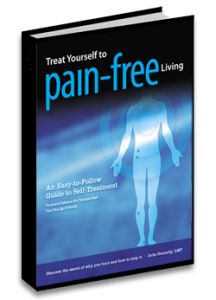 treat all of the major muscles in your body by using The Pain-Free Athlete or Treat Yourself to Pain-Free Living. These books show you how to self-treat muscles from your head to your feet, but maybe you would like to have me help you.
treat all of the major muscles in your body by using The Pain-Free Athlete or Treat Yourself to Pain-Free Living. These books show you how to self-treat muscles from your head to your feet, but maybe you would like to have me help you.
Just because you aren’t in Sarasota, Florida, we can still work together very successfully via the computer. I’ve worked with people all over the world, and the results are excellent! To request a consult, click here.

